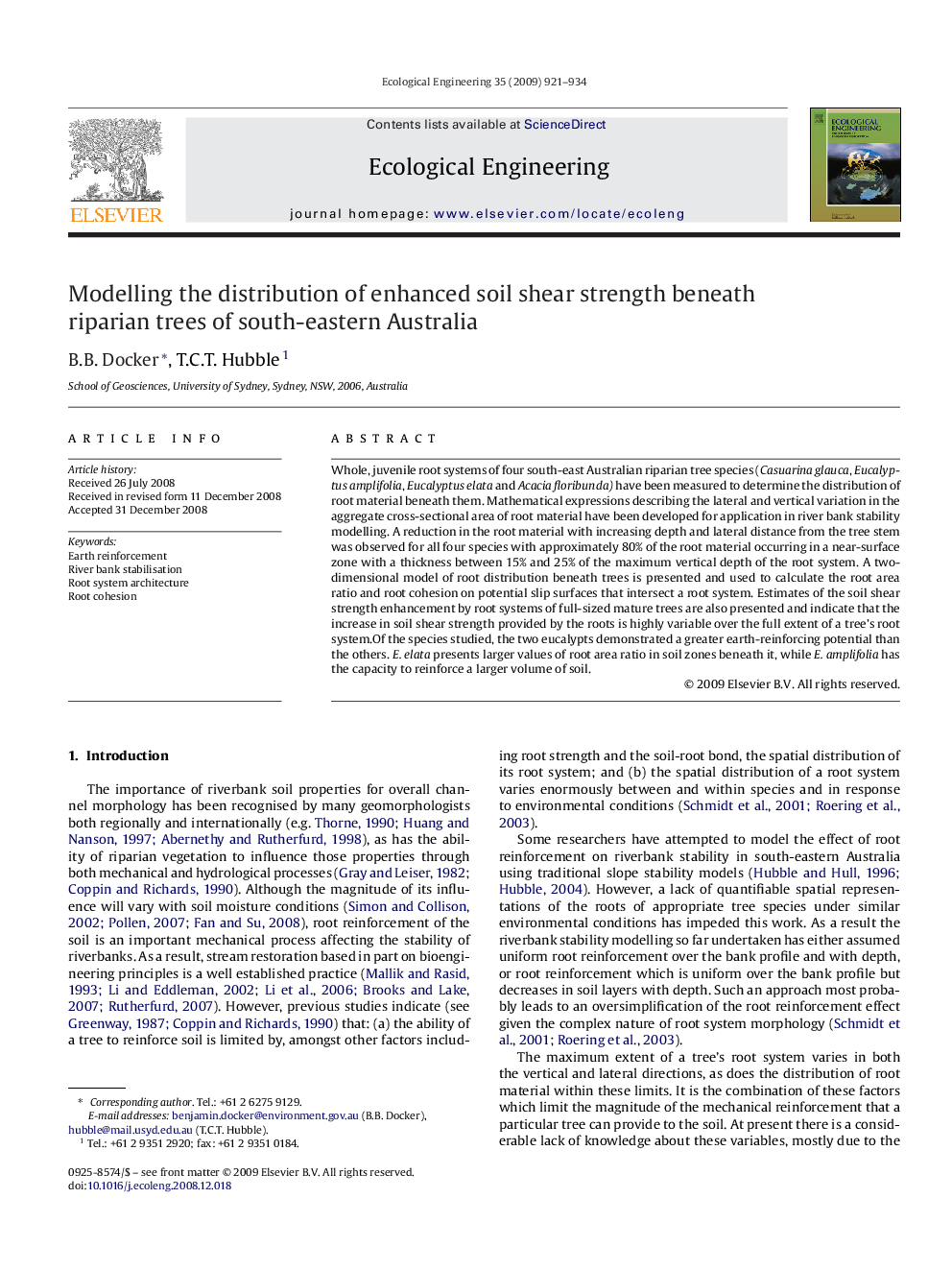| Article ID | Journal | Published Year | Pages | File Type |
|---|---|---|---|---|
| 4390965 | Ecological Engineering | 2009 | 14 Pages |
Whole, juvenile root systems of four south-east Australian riparian tree species (Casuarina glauca, Eucalyptus amplifolia, Eucalyptus elata and Acacia floribunda) have been measured to determine the distribution of root material beneath them. Mathematical expressions describing the lateral and vertical variation in the aggregate cross-sectional area of root material have been developed for application in river bank stability modelling. A reduction in the root material with increasing depth and lateral distance from the tree stem was observed for all four species with approximately 80% of the root material occurring in a near-surface zone with a thickness between 15% and 25% of the maximum vertical depth of the root system. A two-dimensional model of root distribution beneath trees is presented and used to calculate the root area ratio and root cohesion on potential slip surfaces that intersect a root system. Estimates of the soil shear strength enhancement by root systems of full-sized mature trees are also presented and indicate that the increase in soil shear strength provided by the roots is highly variable over the full extent of a tree's root system. Of the species studied, the two eucalypts demonstrated a greater earth-reinforcing potential than the others. E. elata presents larger values of root area ratio in soil zones beneath it, while E. amplifolia has the capacity to reinforce a larger volume of soil.
